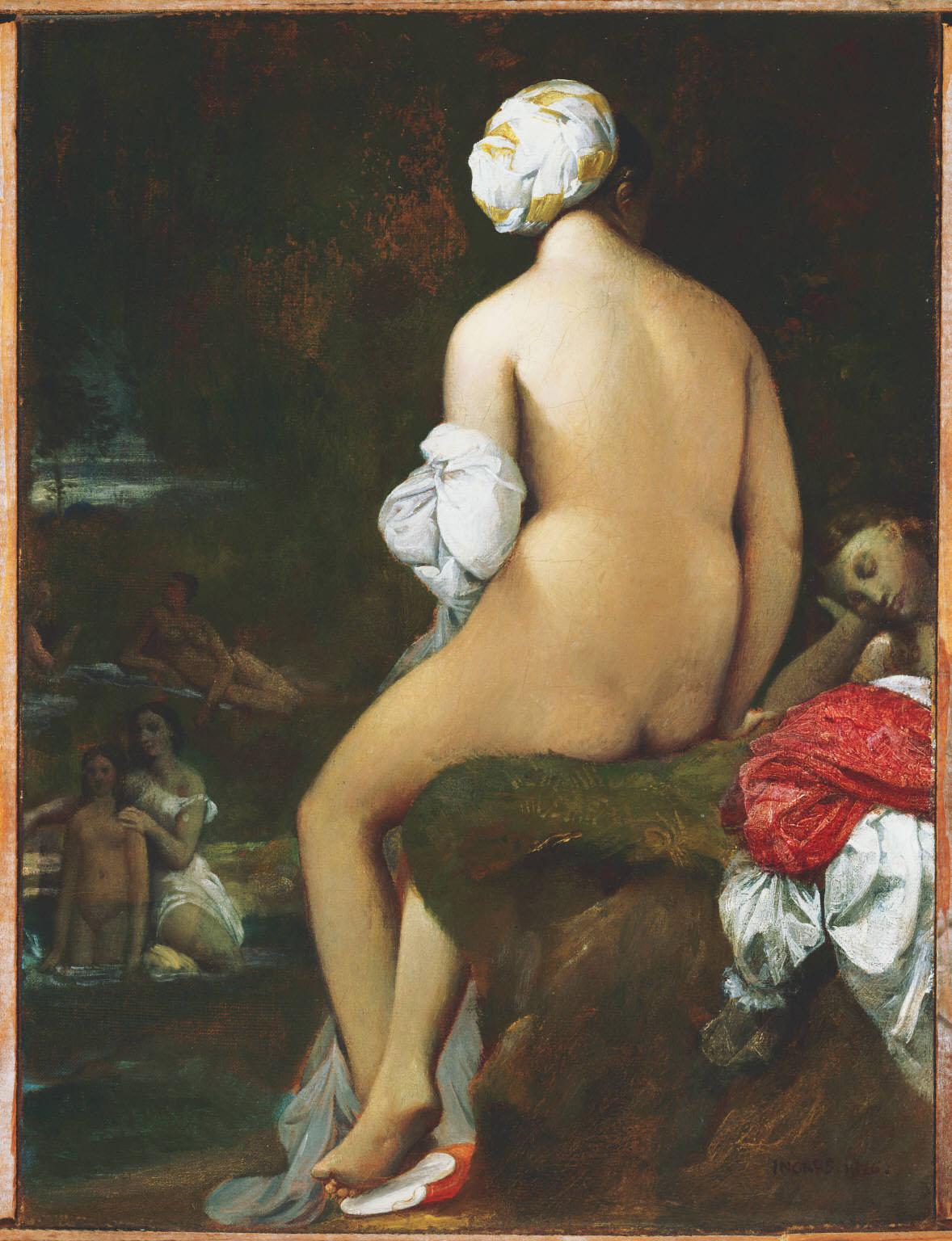The Small Bather
Jean-Auguste-Dominique Ingres ( 1826 )

Jean-Auguste-Dominique Ingres’s painting shows a female nude from behind and seated on a grass-covered ledge by a stream in a woodland setting. Just behind her and on the right, a tumble of red cloth and the gathered, frilled wrist of a sleeve are draped over the earthy bank. In the dim background, on the other bank of the stream, a reclining nude turns toward a companion. In the stream, a partially draped woman bathes a young girl, and to the right of the bather, the upper torso of a sleeping woman is visible, her face resting on the palm of her hand supported by her bent elbow. The cool, motionless, meticulously painted central figure in The Small Bather comes from the Bather of Valpinçon, executed eighteen years earlier. (Valpinçon was the name of the collector who bought the painting, now in the Musee du Louvre, Paris.) Her pose in the earlier painting is identical. Her turban is similarly wrapped, although it has red and white stripes, and she has the same drapery around her elbow. The red mule lies on the same spot on the floor by her feet. The setting is different: a bed with white sheets, within an indeterminate surrounding of black marble, and gray, brown, and white drapery.
In The Phillips Collection’s much smaller version, Ingres has exchanged sheets for grass, substituting earth for the valence and placing the sleeping girl’s head in the space occupied by a pillow in the earlier painting. Ingres was clearly fascinated by the bather’s physical type, and he used the central figure in two other works painted after the one in The Phillips Collection. Carefully lit to show off her smooth and perfect skin and the sinuously rounded, supple curves of her neck and shoulder, the curiously boneless bather suggests the icily erotic marbles by Antonio Canova, Ingres’s great Italian contemporary. Ingres studied in Paris under Jacques-Louis David and was a prodigious draftsman. A great admirer of High Renaissance Italian painting, especially the work of Raphael, Ingres spent many years in Rome. Duncan Phillips, a collector for whom color and painterly handling represented the highest values in painting, had no natural affinity for Ingres. He included him in his collection as a foil to Delacroix, considering him representative of what more painterly romantics were struggling against.